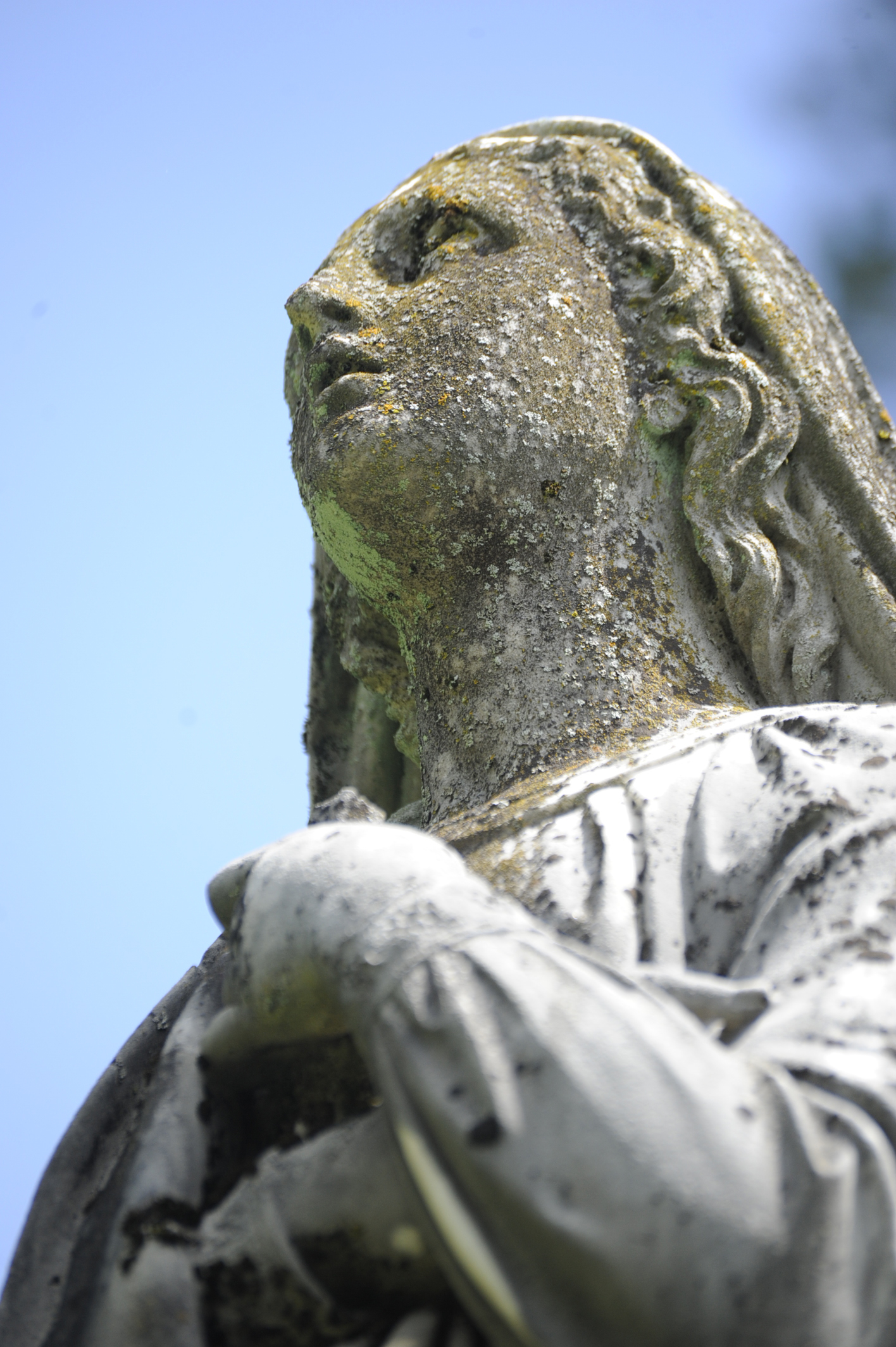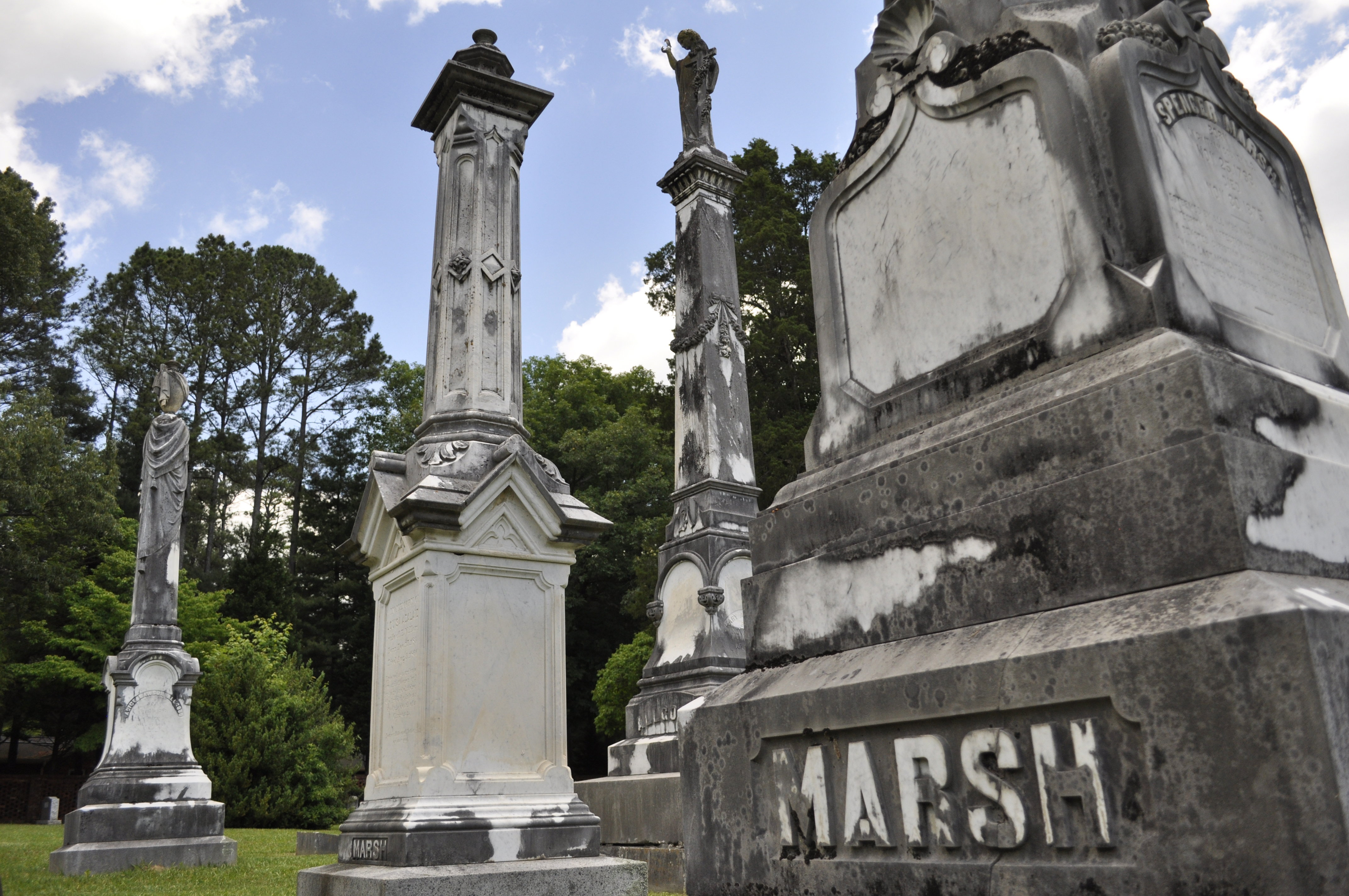Walker County, Ga., Sheriff Harvey Mize's first -- and last -- day on the job was Feb. 14, 1879.
Mize tried to arrest a man named Brad Redding for a misdemeanor. But Redding shot the sheriff, killing him with a blast to the face and chest from a double-barreled shotgun.
There's no record of the gunman ever being caught and brought to justice.
Soon, the sheriff's story -- and those of people buried at 23 gravesites in LaFayette's historic City Cemetery on Shaw Street -- will be brought to life in a yet-to-be-released cemetery walking tour brochure.
"There are interesting people [buried] here," said Catherine Edgemon, the city's Main Street and Economic Development director, who's putting the brochure together. "People who are interested in having a unique tourism experience or really like history would find the brochure helpful."
The brochure is compiled from a variety of historical sources. It will include a map guiding visitors to gravesites in the 20-plus-acre cemetery and short biographies of the dead. One such is A.P. Allgood, one of three men who in 1845 founded the Trion Mill, which still operates today as Mount Vernon Mills in Trion, Ga.
His daughter, Mary Ruth Allgood, who died at age 15, has one of the cemetery's most striking gravestones -- a tall monument topped with an angel.
LaFayette isn't alone in trying to make its historic cemetery more visitor-friendly. Here and across the nation, other cemeteries have gone beyond brochures with attractions ranging from actors dressing up as the dead, to smartphone apps that give tours, to live music concerts.
"At least once a year, we feature what we call 'spirit walks' through here," said Ty Snyder of the Dalton Area Convention & Visitors Bureau.
During these tours, local actors portray the dead at the historic West Hill Cemetery in Dalton, Ga. People buried at West Hill include Gen. Duff Green, who was in President Andrew Jackson's "kitchen cabinet," or collection of unofficial advisers; baseball player Harry Leon "Suitcase" Simpson, one of the first blacks in the American League; and Catherine Evans Whitener, whose cottage industry of making tufted bedspreads led to Dalton's status as the world leader in carpet manufacturing.
When actors from Dalton Little Theatre first portrayed the cemetery's dead in the summer of last year, "it was a sell-out. In fact, they had to do an encore three months later in the fall," said Debby Long, of the Dalton Area Convention and Visitors Bureau.
 Pictured is the monument that marks the resting place of Mary Ruth Allgood located in the LaFayette Cemetery in LaFayette, Ga. Allgood died at the age of 15 and her parents had the quote, "The Lord gave and the Lord hath taken away, blessed be the name of the Lord. We mourn our loss" engraved on the marker.
Pictured is the monument that marks the resting place of Mary Ruth Allgood located in the LaFayette Cemetery in LaFayette, Ga. Allgood died at the age of 15 and her parents had the quote, "The Lord gave and the Lord hath taken away, blessed be the name of the Lord. We mourn our loss" engraved on the marker.The spirit walk is a historical interpretation, not a ghost tour, Snyder noted.
"As historic preservationists, we found that [ghost tour] kind of disrespectful," he said.
Myrtle Hill Cemetery in Rome, Ga., has 20,000 people buried in its 32 acres south of downtown, including Ellen Axson Wilson, the first wife of President Woodrow Wilson and the only U.S. first lady buried in Georgia.
"It's definitely a big draw," said Luke Chaffin, marketing assistant for the Greater Rome Convention and Visitors Bureau.
The cemetery is "next to downtown. It's like a beautiful, hillside sculpture garden," he said.
In October, the visitors bureau leads an annual cemetery tour called "Where Romans Rest." Myrtle Hill is such a big attraction, the visitor's bureau is developing a smartphone app that will determine a visitor's location and provide information for corresponding graves.
"It's probably the future," Chaffin said.
The regional leader in the making-cemeteries-friendly effort may be Atlanta's historic Oakland Cemetery. On Sunday, it was host to a Mother's Day "Love Stories of Oakland" interpretive cemetery tour.
On May 19-20, the cemetery's second annual "Tunes from the Tombs" benefit concert will feature more than 100 bands on five stages plus food trucks and beer and wine for sale.
Those buried at the parklike, Victorian-era Oakland Cemetery include Margaret Mitchell, author of "Gone With the Wind"; golf pro Bobby Jones; 27 mayors; six governors; five Confederate generals; and 6,000 Civil War soldiers -- 3,000 of whom are unknown, said the cemetery's executive director, David Moore.
"It didn't matter if you owned the railroad, rode it or slept under it -- we've got everybody," Moore said.
Oakland's envelope-pushing events, such as Tunes from the Tombs, did "raise eyebrows," Moore said. But he contrasts today's vibrant, well-loved cemetery with its condition in 1976, when the Historic Oakland Foundation was created to preserve it.
"It was a crumbling, kind of weedy mess," Moore said. "To preserve something, you've got to use it."
Moore said the cemetery's visitors are respectful. For example, after Tunes from the Tombs, he said, "you don't see a cigarette butt. You don't see a candy wrapper."
The cemetery's revitalization has helped bring back the surrounding East Atlanta neighborhood and attract such development as condominiums and businesses, including the Six Feet Under Pub & Fishhouse that gives a discount to cemetery visitors.
Cemeteries around the country are trying a variety of tours and special events to draw people in, according to Tanya Kenevich, an editor at New Jersey-based Kates-Boylston Publications. It publishes cemetery trade magazines, including American Cemetery, Funeral Director and Funeral Service Insider.
"A lot of cemeteries are trying to establish themselves as a park," said Kenevich, who cited birdwatching, picnics, nature tours and simply enjoying lunch in a quiet, contemplative spot as some of the uses cemeteries are promoting.
This month's issue of American Cemetery features a seven-page article titled "Celebrating Moms" that describes how cemeteries around the country are inviting people in to celebrate Mother's Day.
Active cemeteries are trying to bring in people partly to offset a decline in burials because of the increasing popularity of cremation, Kenevich said. Older cemeteries that don't have many burials use paid tours to generate money for upkeep.
Moore estimates the Oakland Cemetery gets 50,000 visitors a year for its various events.
"I wish we could get 800,000 [visitors] like the zoo," Moore said. "But we don't have furry animals. We just have dead people."
